What Are The Rules Of Traditional Japanese Tattoos?
A deep dive into the art and ritual of Irezumi.
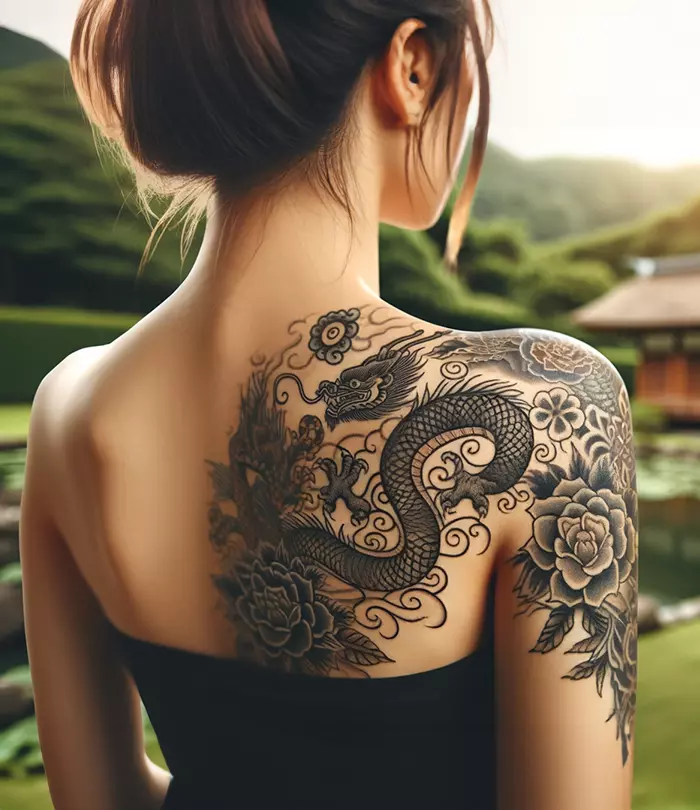
Image: Created with Dall·E
Tattoos have always been a symbol of personal and creative expression. It has been practiced across different cultures, including Japan for centuries. However, traditional Japanese tattoo rules set it apart from other forms of decorative tattooing practiced globally. Irezumi or traditional Japanese tattooing is the perfect mix of artistry, spirituality, and culture. In fact, the traditional Irezumi style has strict guidelines about the designs, their placement, and their meaning, making it difficult to understand and navigate them. But fret not. In this article, we will deeply explore everything about traditional Japanese tattoos, the rules they follow, and more. So without further ado, let us jump in!
In This Article
What Is The Traditional Japanese Tattoo?
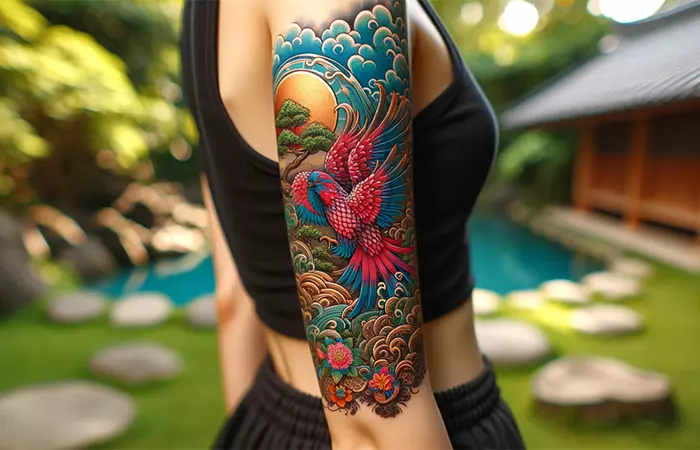
The distinctive style of traditional Japanese tattoos is called Irezumi. The intricate tattoos are bold and colorful and symbolic of Japanese society, culture, personal life stories, and societal codes. Guided by strict rules, the tattoo designs often feature Japanese folklore, mythical creatures, and animals like koi fish, tigers, dragons, and cranes.
The traditional Japanese tattoo style is known as Wabori. It involves using vibrant hues on a black background and intricate designs closely related to Japanese tattoo culture and history. Tebori style is another tattooing style that involves using bamboo with needles or a metal tool called nomi to create the tattoo. While there are many modern tattooing methods available today, many young adults still opt for this ancient tattoo style to get their favorite designs.
Rachel, a blogger, shared her experience of getting a traditional style Tebori tattoo in her blog post. She said, “I have always been interested in tattoos and Japanese-themed tattoos in particular due to their unique style with vivid eye-catching lines and beautiful characters and symbols. My first tattoo was of a Koi Fish on my leg, and after the first one I’ll tell you what it’s addicting (i).” She further wrote, “As you can expect if you decide to go with a Tebori style tattoo you will be investing a lot of time and money, but you will not be disappointed.”
A traditional Japanese tattoo is different from other types of tattoo. Hence, it is important to understand its rules before getting inked. Check out the next section to know more.
Traditional Japanese Tattoo Rules
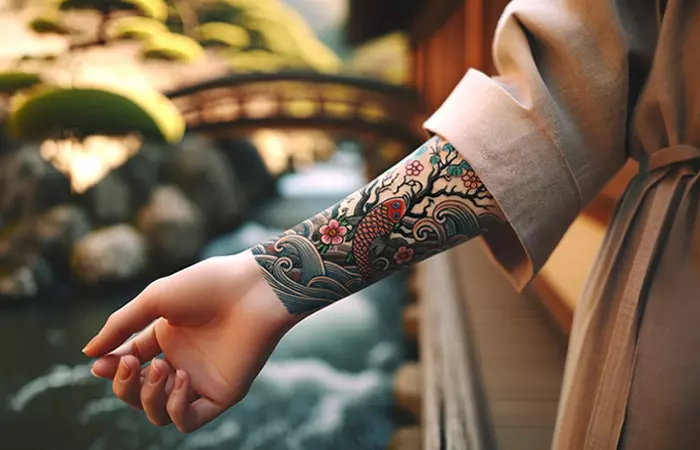
Understanding the rules of traditional Japanese tattoos can help you determine the right design and make an informed decision. Here are the rules followed in Irezumi:
- Tattoo Size: The size of the tattoo is determined in relation to the body part. For instance, the larger designs are reserved for bigger areas like the back, arms, chest, or upper thighs.
- Cultural Significance: The tattoo design should incorporate important symbols from Japanese culture and follow the Irezumi theme.
- Traditional Methods: The tattooing method should be traditional and hand-inked instead of being done by electric tattoo machines. The Tebori tattooing method uses needles made of wood and steel to create the intricate design.
- Symbolic Designs: The beautiful designs should incorporate motifs symbolic of Japanese culture and spirituality such as dragons, cherry blossoms, koi fish, hannya masks, or waves with deep meanings.
 Trivia
TriviaImagery and symbolism play a significant role in Irezumi. Scroll down to the next section for a detailed understanding of the traditional Japanese dragon tattoo.
Japanese Dragon Tattoo Rules

In Japanese culture, the dragon is the symbol of strength, wisdom, courage, protection, and power. Traditional rules often depict the dragon with certain characteristics like five claws, a pearl, and a winding body.
The placement also plays an important role in the meaning it conveys. For instance, a Japanese dragon tattoo on the back symbolizes protection, while one on the arm embodies strength in a battle.
The crane is another popular Japanese design of importance. Find out more about its significance, placement, and rules below.
Japanese Crane Tattoo Rules
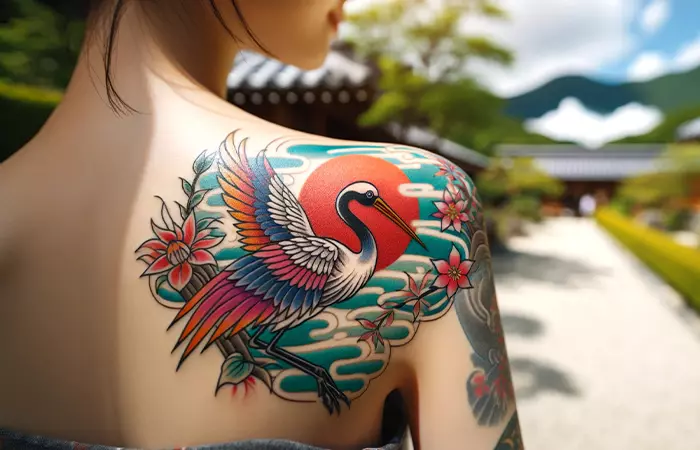
Crane tattoos symbolize longevity, prosperity, and good fortune. It is also believed that the crane has the power to grant one’s wishes. Hence, it is a popular tattoo in Japan. They are usually portrayed with a red crown, black and white plumage, and a graceful and sleek posture.
When it comes to placement, there are many options. For instance, a crane tattoo on the back signifies balance, while one on the chest is symbolic of love and happiness.
The snake is considered a symbol of protection and good fortune in Japan, making it a popular tattoo animal design among tattoo enthusiasts. Scroll down below to learn more about it in detail.
Japanese Snake Tattoo Rules
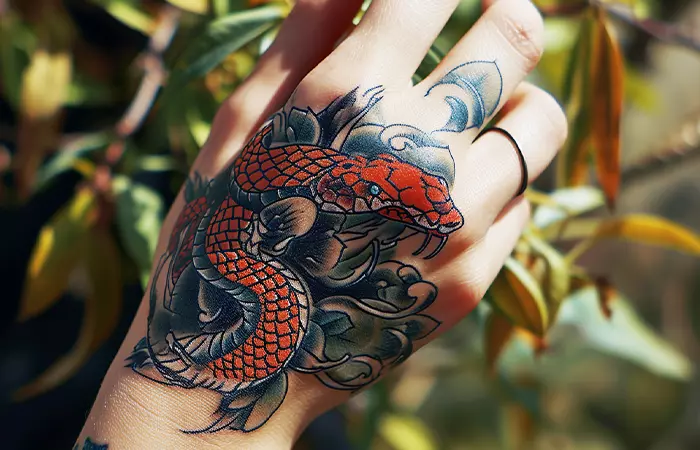
The serpent design represents transformation, protection, and good fortune. The traditional Japanese snake tattoo rules follow strict guidelines. For instance, its coiled form symbolizes the cycles of life. A snake with a dagger represents the cycle of overcoming constant obstacles and challenges in one’s life.
Its placement is important with regard to its meaning. For instance, a snake tattoo on the arm conveys strength, while one on the torso signifies protection.
 Trivia
TriviaApart from the Irezumi common design elements, traditional Japanese-style tattoos have been embraced by the Yakuza and play a key role in how the crime syndicate runs. Find out about the Yakuza tattoo rules and designs in the section below.
Yakuza Tattoo Rules
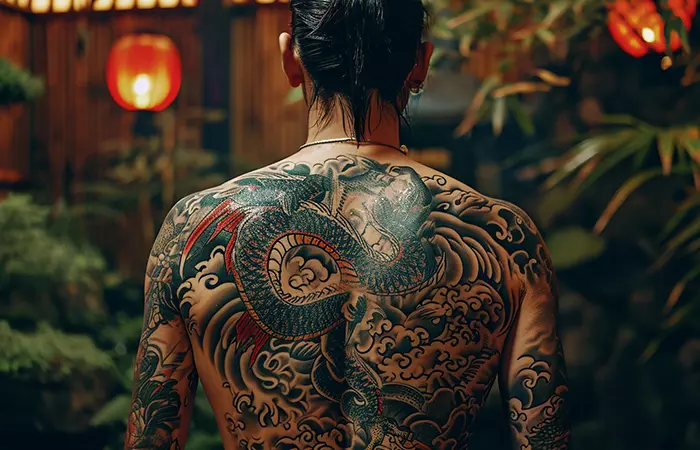
The Japanese organized crime members are known as the Yakuza. Their origin can be traced back to the 17th century when criminals were given tattoos in prison as identifiers. These prisoners soon formed organized gangs and have evolved over the centuries to become the Yakuza that play a big role in modern-day Japan.
Irezumi is strongly associated with the Yakuza and is considered a right of passage for young Yakuza members. Since Irezumi is a long and painful process, this initiation is seen as a test of their dedication and commitment to the syndicate.
The Yakuza adopted a distinct design of Irezumi known as Hormino. They are full-body designs that start from the back and arms and extend down to one’s chest, legs, and shoulders. These traditional tattoos also signify their commitment and rank in the crime syndicate.
Different elements of the Yakuza tattoo symbolize experiences and status within the Yakuza brotherhood. For instance, the carp signifies courage, the dragon represents wisdom and power, the tiger symbolizes strength, and the snake embodies healing.
Traditional Japanese tattoo designs are a sacred tapestry of culture, body art, and symbolism. Irezumi embodies more than skin-deep aesthetics and reflects a profound narrative. It is often guided by unwritten cultural norms, the deliberate choice of symbols, and the right tattoo placement. From a dragon symbolizing courage and power to cherry blossoms signifying the fleeting nature of life, each element embodies a story personal to the individual. So before finalizing on a traditional Japanese tattoo design, adhere to the standard rules as a symbol of respecting the culture as well as the heritage.
Frequently Asked Questions
How painful is a traditional Japanese tattoo?
While the pain tolerance varies from individual to individual, traditional Japanese tattoos are known for being painful. The intricate tattoo process involves the Horishi (tattoo master) creating hand-poked designs that may cause more discomfort in comparison to modern tattoo methods.
What is the difference between traditional and modern Japanese tattoos?
The stark difference between a traditional and modern Japanese tattoo is the style of tattooing. Traditional tattooing involves creating hand-inked designs with a bamboo needle, whereas modern Japanese tattoos are created using advanced electronic tattoo tools.
Do traditional Japanese tattoos have color?
Yes, traditional Japanese tattoos incorporate vibrant colors such as red, purple, white, green, yellow, and black with each color symbolizing something different. For instance, red represents passion, white is for honesty, and yellow embodies optimism.
Do traditional Japanese tattoos age well?
Yes, traditional Japanese tattoos age well due to their intricate artistry and vibrant hues in comparison to Western-style tattoos.
How long does a traditional Japanese tattoo take?
The time depends on the size and intricacy of the tattoo as well as the chosen body part. However, these tattoo designs are always intricate, they can take up to anything between 40 to 100 hours. Multiple sittings and weekly visits to the Japanese tattoo artist are often required in order to complete the large tattoos.
What are some Japanese tattoo sleeve rules?
The traditional Japanese sleeve tattoos feature designs such as dragons, cherry blossoms, waves, koi fish, and skulls that cover the whole sleeve. They incorporate vibrant colors and intricate detailing and make sure there is a natural flow between the elements.
Key Takeaways
- Traditional Japanese tattoos or Irezumi feature elaborate tattoos that are a blend of body art, culture, the Japanese people’s way of life, and societal codes.
- The designs include dragon, koi fish, waves, tiger, snake, and cherry blossoms.
- The traditional Japanese tattoos are created by hand and do not use modern tattoo machines.
- The Yakuza or Japanese mafia use a special Irezumi design called Horimono to symbolize their rank and commitment to the syndicate.
If you want to get a beautiful and traditional Japanese design inked, it is important to understand its origins. Check out the video for the history of ancient Japanese tattoo style.
Personal Experience: Source
StyleCraze's articles are interwoven with authentic personal narratives that provide depth and resonance to our content. Below are the sources of the personal accounts referenced in this article.
(i) Tattooing the Tebori Wayhttps://mtsujapanesecultureclass.wordpress.com/2015/10/27/tattooing-the-tebori-way/
Read full bio of Anastasiia Gatsko
Read full bio of Eshna Das
Read full bio of Manjari Uppal









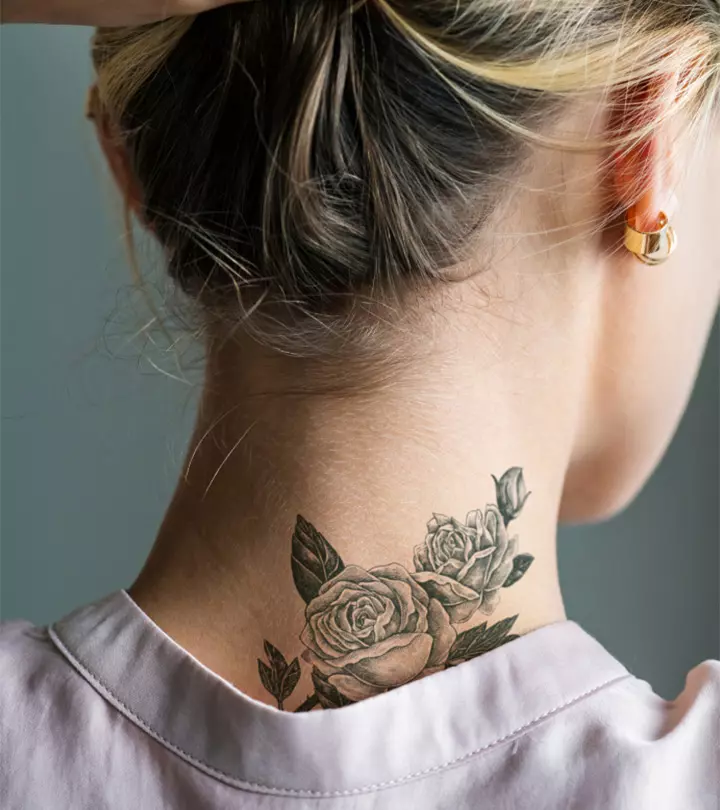

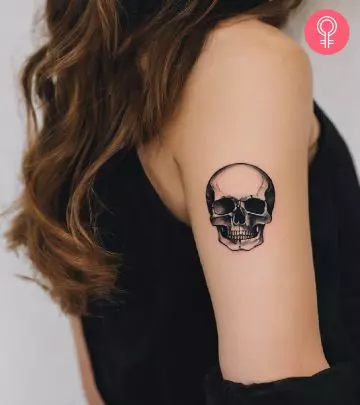
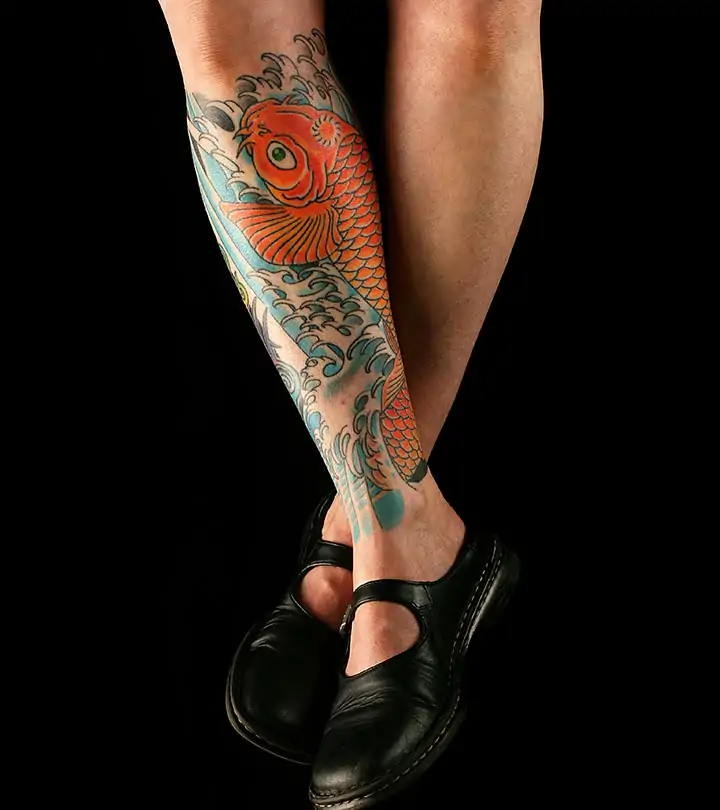



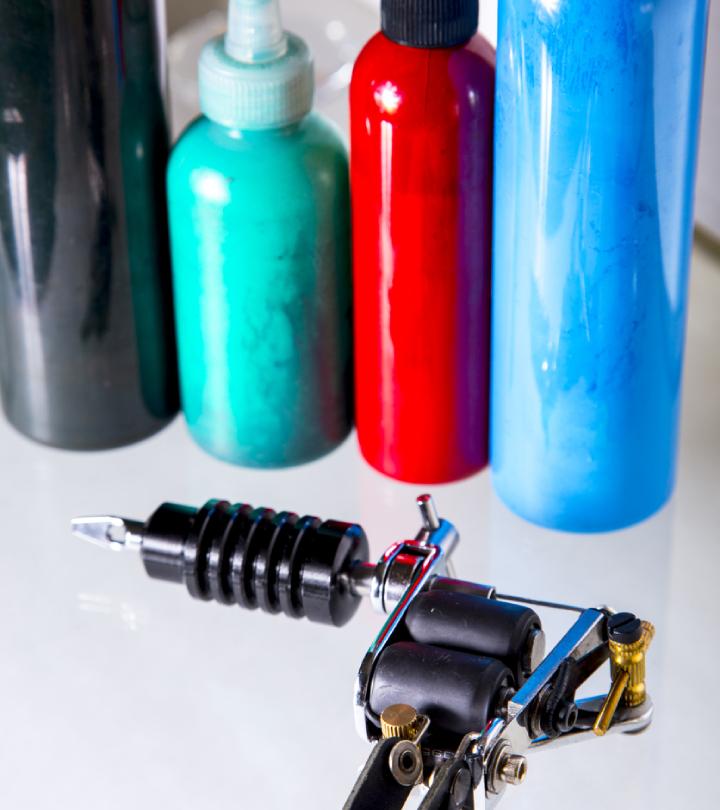







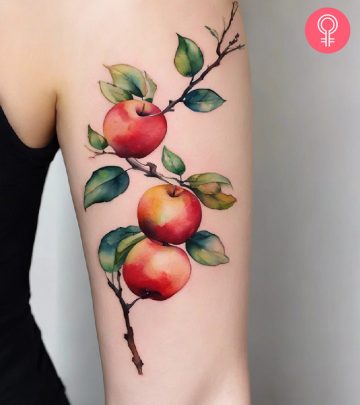

Community Experiences
Join the conversation and become a part of our empowering community! Share your stories, experiences, and insights to connect with other beauty, lifestyle, and health enthusiasts.